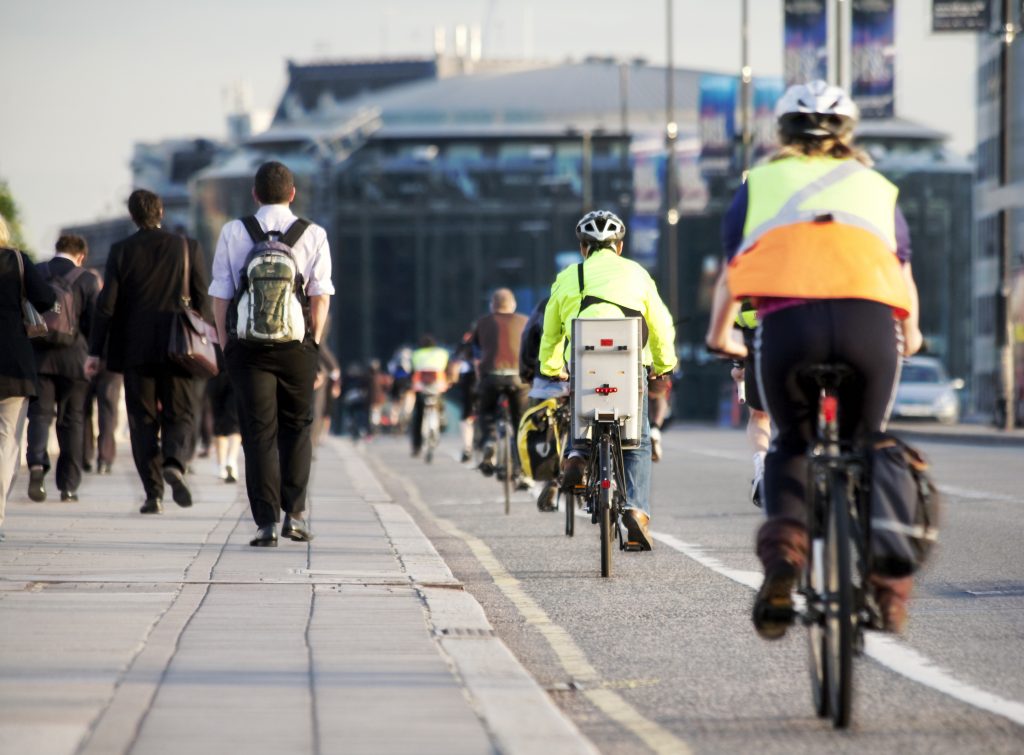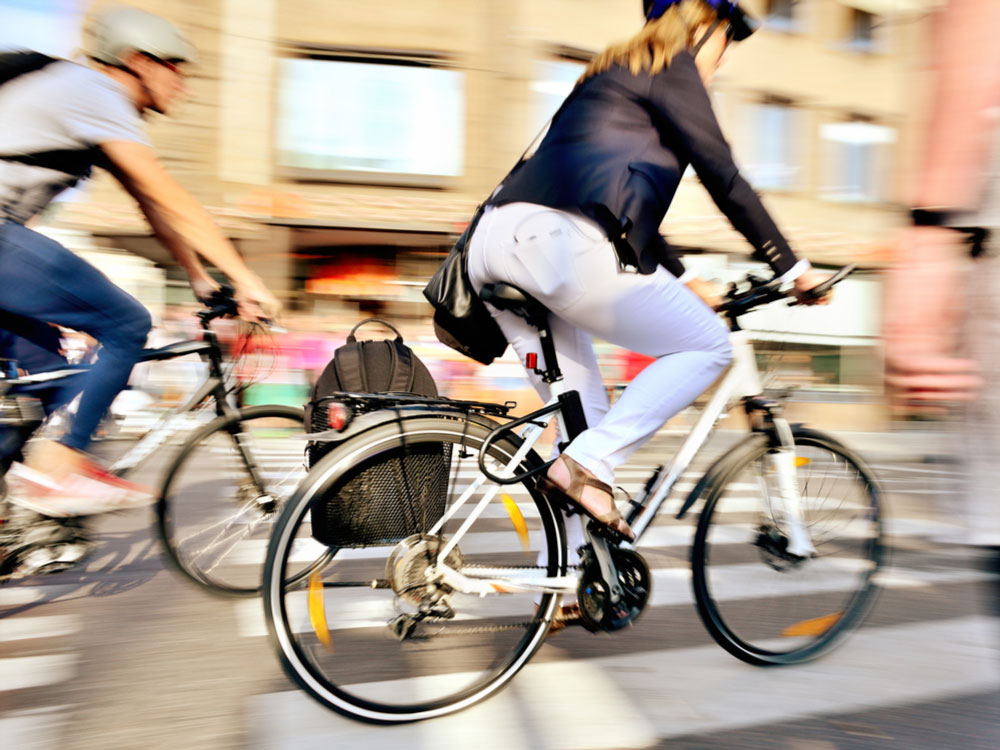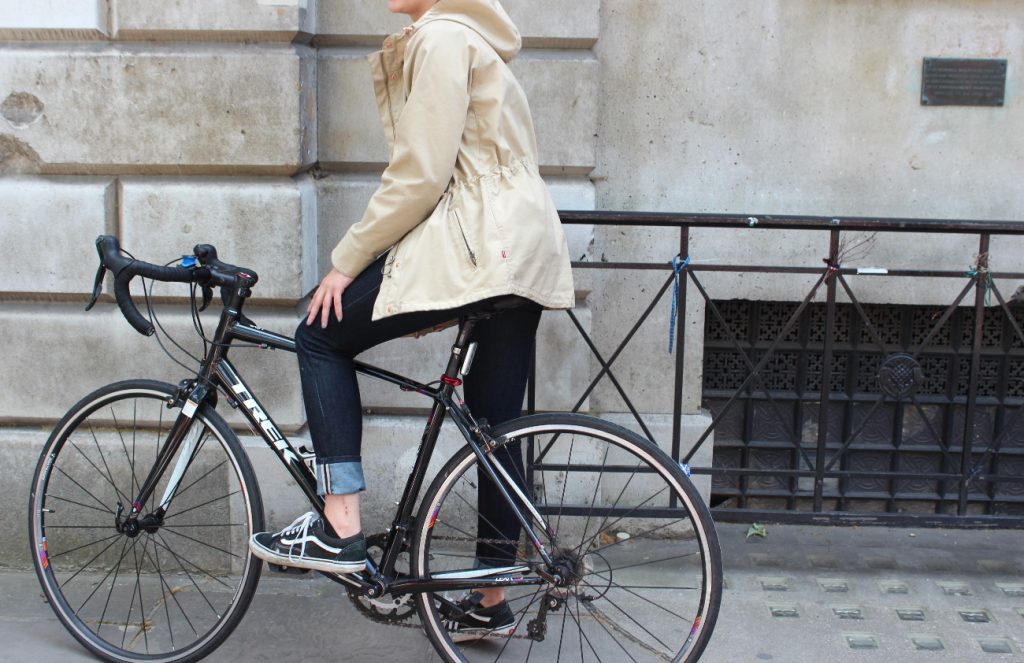Do you want to cycle to work but scared of the traffic? Well, you need to ask yourself if you are ready to cycle in rush hour traffic. There is a positive progression from riding the quieter country lanes at the weekends, to riding amidst heavy traffic. However, if you have done a few good rides and are confident in your bike handling i.e. can stop and start easily, change gears and brake without looking down too often, then you could be ready for cycle commuting in traffic.
If you are planning to ride to work and want to get started, then remember to get your bike serviced and take puncture repair kit like you would when cycling at the weekends.

Building Confidence:
When you feel ‘on top of your traffic’, you are essentially in full control and aware of the traffic and situations around your cycling. To do this and gain confidence you need to:
1. Go with the flow with the traffic:
One of the first things you need to learn is to ride with the flow of the traffic. By this I mean do not start swearing or gesturing to motorists who cut up your path, or who just haven’t seen you, because this is part and parcel of cycling to work anyway.
The urge is always there to ‘react’, but this just makes a situation worse and you risk distracting yourself further from traffic around you. What you need to do is ride defensively, but assertively and simply ‘go with the traffic’ instead of fighting it, wherever possible.
2. Make eye contact:
Never assume that people see you. Make eye contact continually because you want to know that people see you and acknowledge your presence.
To get eye contact, you need to look directly into drivers’ eyes and make sure they have seen you. Get eye contact even when you are riding along a priority road and cars are waiting to pull out from a side road. If you haven’t been seen by other road users, then don’t ride on past! The same goes for roundabouts and major junctions.

3. Listen to traffic around you:
Listening for traffic is another key survival technique that allows you to judge what’s happening around you. To do this you use your ears and listen for what’s coming up behind you.
For this reason, wearing headphones is lethal when riding to and from work in heavy traffic!
4. Get used to doing multiple shoulder checks:
The shoulder check is critical to your safety as a cyclist on the open roads, so you don’t collide with other road users.
The first shoulder check you do should be when pulling out of your driveway or pulling off from the side of the road. Always check over your shoulder to see if the road is clear behind you, as well as ahead when setting off.
Shoulder checks are also useful when changing lane position so you can spot for overtaking traffic.
Other shoulder checks are usually used as ‘glances’ to check the traffic situation behind you. Now, when I say, ‘glance’ I mean no longer than a fraction of a second ‘snapshot’. It’s all you need to get a clearer picture of what’s happening behind you.
5. Gesturing to change lanes or road position:
Gesturing is important for cyclists because you need to let other road users know of your intentions. For this reason, they need to be clear. For this reason, err on the side of caution and use either your left arm, or right arm to signal left or right, respectively.

6. Position yourself correctly in your lane:
The position that you hold in a lane will depend on the speed of traffic that is passing you:
– Fast traffic – keep far left:
When traffic is passing faster than you, be sure to keep into the left side of your lane. You need to be no more than about a foot from the curb on the road, but not so far to the left that you hit dirt or continually ride over drain covers (although sometimes you have no choice).
– Difficult congested traffic:
Sometimes you will want to position yourself in the middle of the lane. If the road is particularly narrow or you feel it is unsafe for motorists to pass you, consider riding in the middle of your lane.
Be sure to keep up with traffic though, because motorists will become frustrated if you are slowing them down and they cannot get around you.
– Turning off to the right – position yourself far right of your lane:
Before taking a right turn across traffic, remember to look behind you with a shoulder check, move to the far right of your lane, then check again before crossing the central reservation.
7. Look ahead (as well as behind).
Obviously, you must look where you are going when cycling in traffic. It’s easy to get stuck behind parked cars, taxis or road works when you’ve not looked far enough up the road!
By looking ahead, you can make vital decisions ahead of time to avoid a road situation from happening. Looking ahead is therefore key to cycling in traffic. In fact, you need to be reading the traffic situation all around you the entire time.
There is no place for distraction, so always keep your head up so you don’t miss what’s coming up ahead.
Final words:
The first few times you ride, you will feel nervous. Every cyclist must start somewhere and yes, it can feel overwhelming to start. Know though that a little bit of nerves never truly leaves the highly competent bike commuter. Competent bike commuters know that they need to feel a little ‘on edge’ to keep them alive and alert i.e. remember, there’s no place for ‘over confidence’ on today’s roads.
Put these basic principles to good use on your first few bike rides to work, it won’t be long before you’re riding with confidence and feeling ‘on top of’ your traffic. Good luck!



